“The planet is experiencing unprecedented climate change, and the Internet is both part of the problem and the solution”
Ecommerce businesses have started reducing their emissions by sourcing more environmentally friendly materials, optimising product manufacturing, reducing packaging, and improving last-mile deliveries. However, it’s easy to overlook one important source of emissions: the energy to power those ecommerce sites.
The good news is that with a digital and ecological sustainability approach, businesses can not only reduce those emissions but also improve the performance of digital channels with relative ease.
What is digital and ecological sustainability, and why should we care about it?
In a nutshell, digital and ecological sustainability is a resource-conscious approach to building more efficient and effective digital sales channels. In practice, this means reducing as much as possible the size of ecommerce sites, websites and apps by making conscious design and development decisions.
The internet uses a huge amount of electricity. At the moment, unfortunately, this also implies that our digital sales channels have an ecological footprint. Although the amount of renewable energy sources powering the grid grows every year, more than 60% of global electricity generation came from fossil fuels in 2021.
Share of Communication Technology of global electricity usage
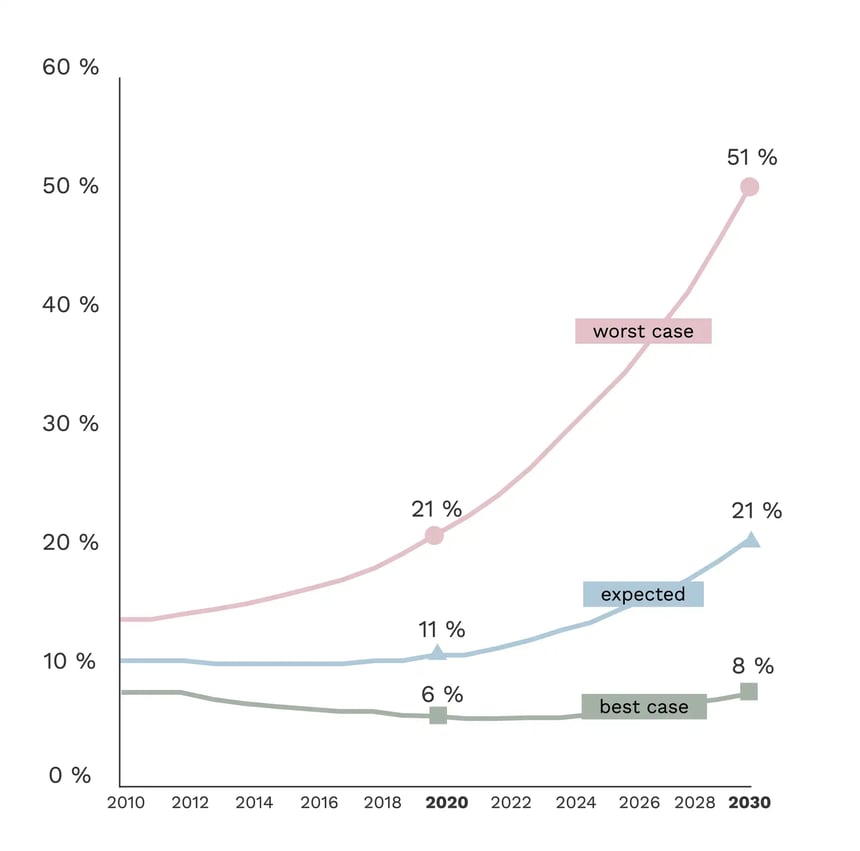
Source: Share of Communication Technology of global electricity usage
With ever-broader internet bandwidth and increased data server efficiency, we have been making our digital channels bigger and more complex. We’ve all been guilty at some point of keeping adding content to our websites just because we can. And, the more we add, the more electricity consumption increases with every page load.
According to the International Energy Agency, data centres consume approximately 200 terawatt-hours (TWh) of electricity – that’s almost two times the electricity consumed in the Netherlands. Every time we open an eCom site, play a video, open an email, or do a search, we’re generating greenhouse gas emissions from the energy consumed to send the data to your site, cool servers down, power network infrastructure, and keep our devices running. (The emissions generated vary depending on the location of the server from which the data is fetched and the energy sources of the electricity consumed by the devices.)
Global trends digital and energy indicators, 2015–2021
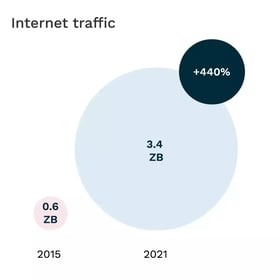
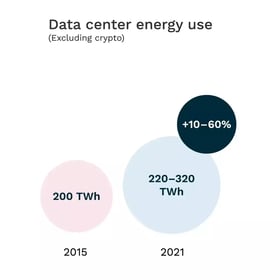
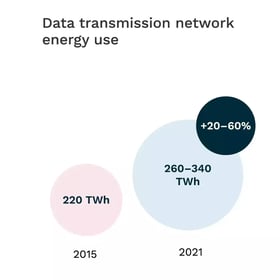
Source: Global trends in digital and energy indicators, 2015–2021
How can digital AND ecological sustainability help your business succeed online?
A digital channel built with ecological sustainability in mind is often SEO-friendly, user-friendly and more accessible, too – a win-win.
At this point, you might be thinking, “Great, something else to add to the list of 200 other requirements I need to worry about”. Reducing your digital sales channels' energy consumption doesn’t necessarily imply more work and is not only the right thing to do. Besides reducing the environmental impact, building with digital and ecological sustainability in mind can help you to:
- Improve search engine ranking: Reducing the weight of your pages improves their loading times, and search engines love that.
- Improve user experience: A well thought information architecture and content structure help your visitors and users find the products, services, and information they are searching for with less back and forth between pages.
- Improve accessibility: Simplifying information architecture makes your site easier to browse and improves the experience of navigating through your content with screen-readers.
- Increase conversion rates: As a result of all of the above, it can increase business performance as conversion rates tend to improve when websites get faster and the experience is more enjoyable.
- Reduce server costs: Low-footprint pages require less storage space and bandwidth, which can produce immediate savings in hosting and cloud service bills.
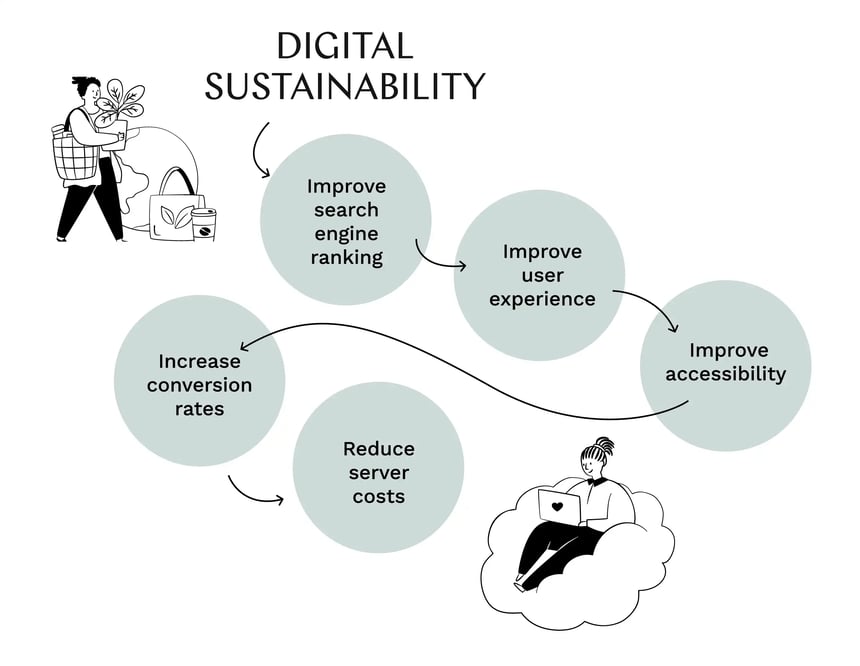
Three steps to start reducing carbon footprint across your entire digital landscape
Change begins with awareness. We can estimate the emissions your digital sales channels generate through a sustainability audit. There are plenty of resources out there that can help with this.
- You can assess a website's co2 emission with a carbon calculator.
- Measure the current weight of your site with page speed insights.
- Look into the website’s current host through The Green Web Foundation hosting checker.
Once you’ve gained visibility on the energy consumption and emissions of your digital channels, you’ll be better positioned to start planning your next steps. Pro tip: Invite your development, design, and marketing teams to collaborate while auditing and planning your action plan. Building your digital channels is a multidisciplinary effort, and the conversation will benefit from including all their points of view.
We are all in a learning process when it comes to sustainability-related matters. Nobody has all the answers yet. What we do know is that the internet contributes significantly to companies' carbon footprint, and there are low-hanging fruits that can help reduce it. Even if it's not the main focus of your site, your business and the environment can still benefit from embracing a digitally and ecologically sustainable approach. Let's use sustainability as a catalyst to create better digital sales channels and digital products.
This is part of a two-blogpost series. If you would like to learn more about how you can reduce the digital ecological footprint of your business, read the 6 steps to building more sustainable ecommerce websites.
Looking to ramp up your digital sales operations sustainably in the quickly evolving commerce scene? The Columbia Road team is ready to energise your digital sales - explore our services and reach out.
The Data Handbook
How to use data to improve your customer journey and get better business outcomes in digital sales. Interviews, use cases, and deep-dives.
Get the book



